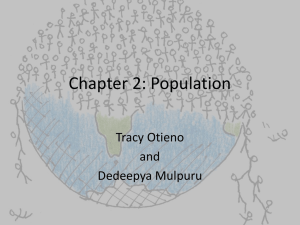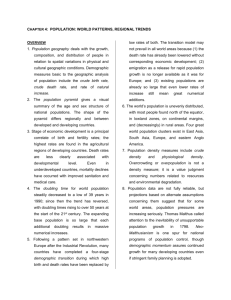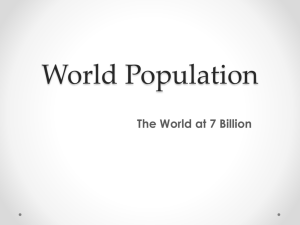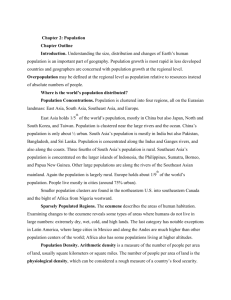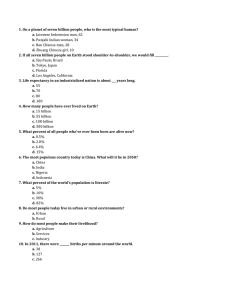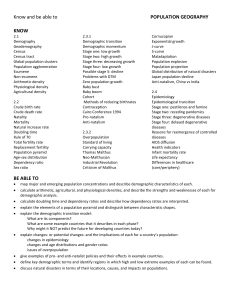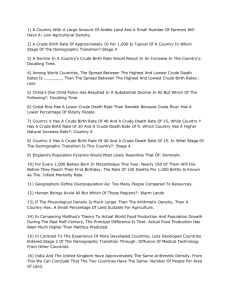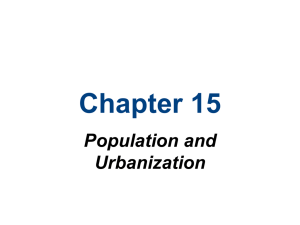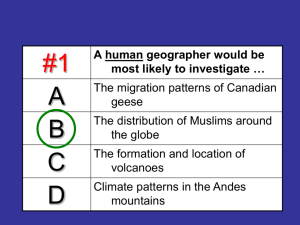When the world's population reached 6 billion in 1995, it was
advertisement
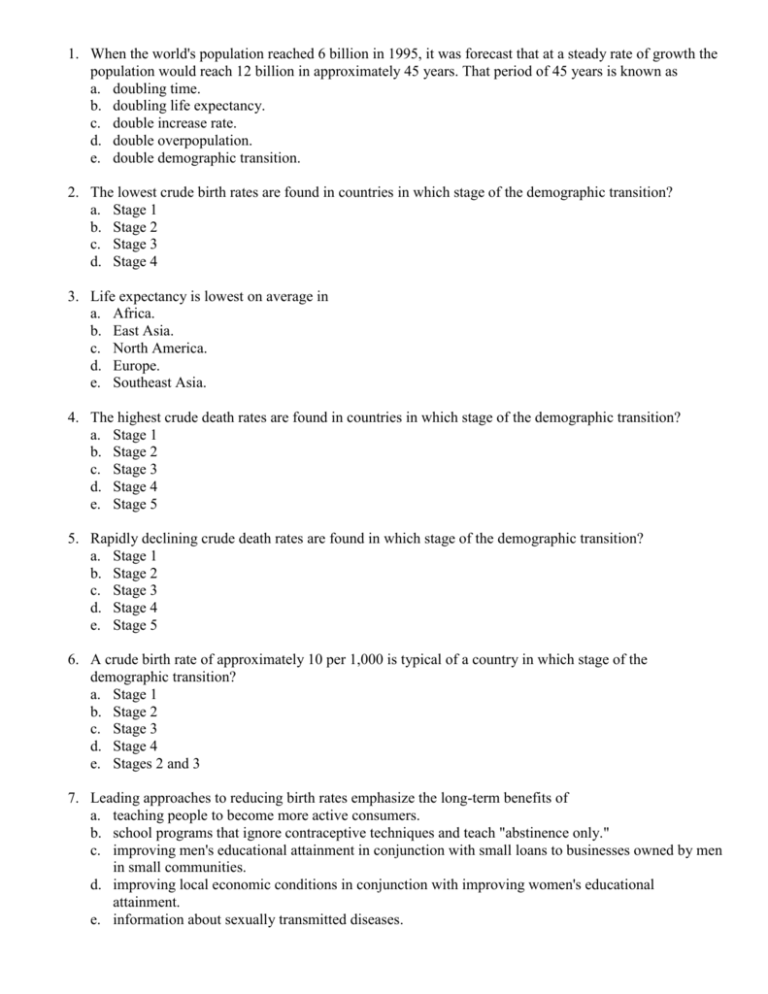
1. When the world's population reached 6 billion in 1995, it was forecast that at a steady rate of growth the population would reach 12 billion in approximately 45 years. That period of 45 years is known as a. doubling time. b. doubling life expectancy. c. double increase rate. d. double overpopulation. e. double demographic transition. 2. The lowest crude birth rates are found in countries in which stage of the demographic transition? a. Stage 1 b. Stage 2 c. Stage 3 d. Stage 4 3. Life expectancy is lowest on average in a. Africa. b. East Asia. c. North America. d. Europe. e. Southeast Asia. 4. The highest crude death rates are found in countries in which stage of the demographic transition? a. Stage 1 b. Stage 2 c. Stage 3 d. Stage 4 e. Stage 5 5. Rapidly declining crude death rates are found in which stage of the demographic transition? a. Stage 1 b. Stage 2 c. Stage 3 d. Stage 4 e. Stage 5 6. A crude birth rate of approximately 10 per 1,000 is typical of a country in which stage of the demographic transition? a. Stage 1 b. Stage 2 c. Stage 3 d. Stage 4 e. Stages 2 and 3 7. Leading approaches to reducing birth rates emphasize the long-term benefits of a. teaching people to become more active consumers. b. school programs that ignore contraceptive techniques and teach "abstinence only." c. improving men's educational attainment in conjunction with small loans to businesses owned by men in small communities. d. improving local economic conditions in conjunction with improving women's educational attainment. e. information about sexually transmitted diseases. 8. Thomas Malthus concluded that a. population increased arithmetically while food production increased linguistically. b. the world's rate of population increase was higher than the development of food supplies. c. so-called "moral restraint" was producing lower crude birth rates. d. population growth was outpacing available resources in every country, according to algebraic calculations. e. crude birth rates must balance crude death rates. 9. A possible stage five epidemiological transition is the stage of a. pestilence and famine. b. receding pandemics, including possible zombie pandemics. c. degenerative and human-created diseases. d. delayed degenerative diseases. e. reemergence of infectious and parasitic diseases. 10. The stages of the epidemiologic transition are based on a. causes of death at varying stages of the demographic transition. b. the means through which disease is transmitted spatially. c. non-contagious diseases such as heart disease, obesity, or diabetes. d. new food sources which produced population explosions. e. pandemics like the bubonic plague, influenza, or AIDS. 11. Most population growth is presently concentrated in more developed countries. a. True b. False 12. Societies move from Stage 2 to Stage 3 of the demographic transition because of technical change, but from Stage 3 to Stage 4 because of social change. a. True b. False


